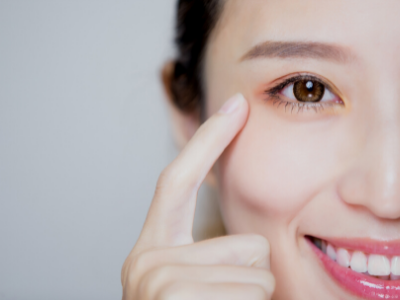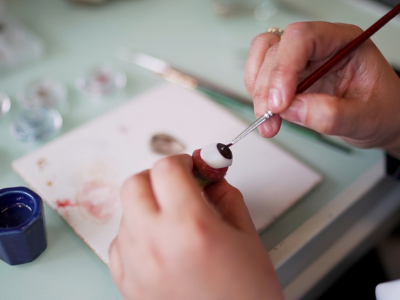She’s got her eyes on you (and a few funny faces, too)
PUBLISHED ON
SCROLL DOWN
At this department for vision care, all rolled into one person, you will find a teacher, an entertainer, a problem-solver and…
…an (O)tortoise?
Not the tortoise – but an orthoptist! These Allied Health Professionals diagnose and treat conditions like "lazy eye" and "crossed eye", helping patients focus on the world in a whole new light.
“Patients call us ‘nurse’, ‘doctor’ or ‘technician’... I tell them I’m an ‘O-tortoise’!”
With her playful introduction, Ms Eileen Lim, Principal Orthoptist, Department of Ophthalmology, National University Hospital (NUH), sets the tone for her day – especially when young patients are involved. “I usually come in earlier to prep the room and myself, emotionally, for the day,” Ms Lim said. “As an orthoptist, I see patients ranging from as young as four months old to over 90 years old.”
“In a typical day, I play many roles,” she said. “These range from being a ‘kid’s entertainer’ – to build rapport, make the assessment fun, and get a child’s attention and co-operation – to being a firm, caring, empathetic and attentive healthcare professional.”
"Sometimes, the child and I even take turns making silly faces. It’s moments like these that make me enjoy the work!"
Ms Lim then carefully examines the child’s vision, making the experience both fun and comfortable.
Orthoptists like Ms Lim are eye professionals who specialise in the assessment, diagnosis and non-surgical management of eye disorders. They possess unique skills in areas such as education and the prevention of eye issues.
Ms Lim also works closely with ophthalmologists, optometrists and ophthalmic technicians. “After a thorough orthoptics assessment, I usually formulate my management plan and suggest options,” she said. “If a patient has a challenging condition, I’m comfortable approaching my ophthalmologist colleagues to discuss my impression and management plans, and we have a lively discussion.”
Inspired to become an orthoptist after seeing (pun intended!) how her former neuro-ophthalmologist boss helped her sister with a second opinion, Ms Lim specialises in helping paediatric patients.
With young patients, she shared, it is common for them to have conditions like “lazy eye” or “crossed eye”, although Ms Lim explained that these terms are often used broadly.
The term “lazy eye” is often linked to ocular misalignment but can result from other conditions, Ms Lim said. "’Lazy eye’ refers to amblyopia, which is reduced vision in one or both eyes,” she explained. “It can be caused by strabismus, anisometropia (where one eye has a higher refractive error than the other), or stimulus deprivation, such as in cases of ptosis or cataracts.”
Children with amblyopia are commonly advised to wear glasses full-time – if anisometropia is the cause – and may need part-time patching of the stronger eye to help the weaker one see better.
Using a stereotest board, Ms Lim checks the child’s depth perception, with certain images “popping out” in 3-D to assess binocular vision.
The tools of Ms Lim’s trade include an occluder, which covers one eye during tests, a fixation target to hold the patient’s gaze, and a prism to measure the angle of misalignment.
“These are our ‘bread and butter’ instruments,” she said. “We need them to perform orthoptic assessments to detect any misalignment of the eye or preference for using one eye.”
In addition to assisting children with vision problems, Ms Lim finds meaning in helping older patients regain lost eye function and enjoy life again. She remembers a patient with double vision caused by thyroid eye disease. He had unknowingly developed a head tilt and chin-up posture over the years to manage his double vision, which resulted in persistent neck pain.
After fitting him with a prism to relieve his double vision, his posture was corrected immediately. “When he came back for his follow-up, he happily reported that his ballroom dancing partner commented that his head is straight now, and she no longer had a partner with an abnormal head posture,” Ms Lim said.
“The most rewarding part of my job is knowing that the work I do helps my patients.”
– Ms Eileen Lim
With each patient, Ms Lim is dedicated to making a lasting impact on their vision and well-being.
Her best tips for parents? Stay attentive to your child’s vision development and seek professional advice early if you notice any issues. Early intervention makes all the difference.
Interested to join us as a Orthoptist? Find out more about working in our institutions and the work that they do here.
In consultation with Ms Eileen Lim, Principal Orthoptist, Department of Ophthalmology, NUH.




